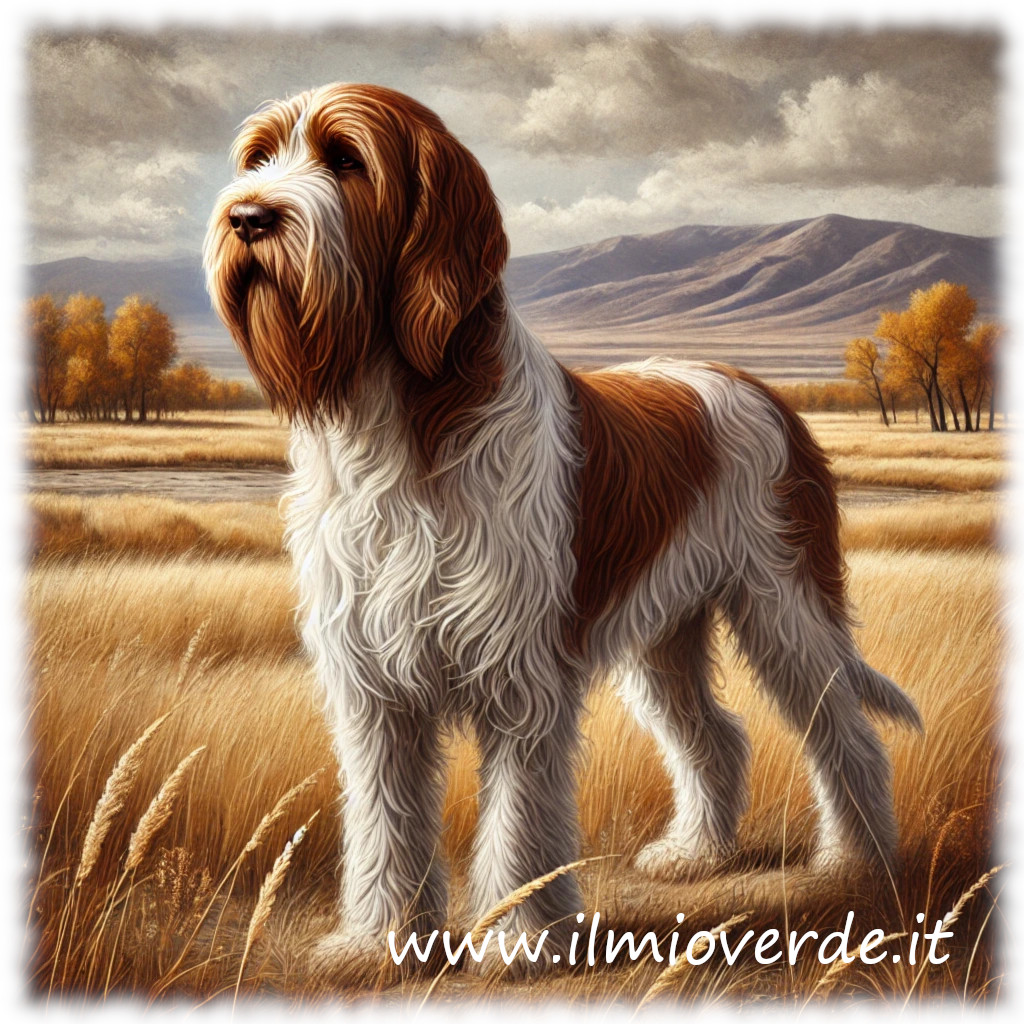Italian Spinone
The Italian Spinone is one of Italy’s oldest and most cherished breeds, known for its elegance, versatility, and balanced temperament. With a sturdy yet affectionate appearance, this dog has adapted to the demands of hunting while maintaining a deep bond with its family. Let’s take a closer look at this extraordinary breed.
Origins and History
The origins of the Italian Spinone date back to the Middle Ages. It is believed to have descended from a crossbreeding of Italian hunting dogs and other European breeds, such as the French pointing dog and the Pointer. Since ancient times, it has been a hunting dog, valued for its ability to search for and retrieve game, particularly feathered prey such as pheasants, partridges, and quails.
Over the centuries, the Spinone has remained a trusted companion for Italian hunters, preserving its working abilities. However, with modernisation and the decline of traditional hunting practices, the breed has also adapted to family life, retaining its sociable and affectionate nature. Today, the Italian Spinone is not only a beloved hunting dog but also a loyal and loving family companion.
Physical Characteristics
The Italian Spinone is a medium to large-sized dog, typically weighing between 30 and 40 kg. It has a strong, muscular build with a generally harmonious appearance. Its head is large, featuring a broad muzzle and a prominent forehead. The breed’s distinctive long, drooping ears are covered with hair. The coat is rough and wiry, protecting the dog from harsh weather during outdoor activities.”
The Spinone comes in various colours, including white, white-orange, white-brown, or roan. The markings are distributed in an elegant pattern, giving the dog a unique and distinguished look.
Temperament and Behaviour
One of the most fascinating aspects of the Italian Spinone is its temperament. It is a balanced, gentle, and patient dog, particularly with children. Highly affectionate with family members, the Spinone is exceptionally loyal and devoted.
Although a hunting breed, the Spinone is calm and relaxed at home. It is less exuberant than other working breeds but still requires physical and mental stimulation. Intelligent and easy to train, the Spinone can be slightly stubborn, so training should be patient and consistent.
Activity and Training
The Italian Spinone requires regular physical activity to release its energy. As a hunting dog, it enjoys long walks, running in open fields, and activities that engage its keen sense of smell and retrieving instincts. It excels in retrieving, hunting, and tracking tasks. Thanks to its excellent nose, it can also participate in search-and-recovery trials in modern tasks, including retrieving objects and scent detection.
Although not an overly hyperactive breed, it still needs mental stimulation. Training should include exercises that actively engage the dog, and patience is key, as the Spinone, while intelligent, tends to have an independent streak.
Care and Maintenance
The Italian Spinone’s coat is one of its most distinctive features. While the rough hair does not require overly complex care, weekly brushing is recommended to prevent matting. Additionally, its long, drooping ears should be checked and cleaned regularly to prevent infections.
The Spinone adapts well to both outdoor and indoor living, but like all breeds, it requires a balanced diet and adequate physical activity to stay healthy.
The Italian Spinone is the perfect dog for those looking for a loyal, affectionate, and versatile companion. With its balanced temperament, natural elegance, and outstanding hunting abilities, it is an ideal breed for both hunting enthusiasts and families. If you are looking for a dog that combines intelligence, affection, and a strong work ethic, the Italian Spinone might be the perfect choice for you.
Immagine generata da IA
